Horology Books from the USSR, Part II: 1968 and beyond
Inviato: 25 dic 2015, 17:34
Horology Books from the USSR
Continued from Part I
[ Back to Part I ]
Continued from Part I

- В. Б. Пинсон - Ремонт часов. Легкая индустрия, Москва, 1968г.
Pinson - Remont Chasov / Watch Repair (1968)
A basic textbook for the apprentice watch repairer, with the usual overview on how to use the PPCh-4 timing machine and how to organize the workshop. The scientific editor of the book, Eliseev, published his own handbook on watch repair just few months later. Summary:
1.Overview (Общие сведения);
2.The mechanical watch (Механические часы);
3.Spring driven wall clocks (Настенные часы без боя);
4.Common alarm clocks (Будильники обыкновенные);
5.Pocket and wrist watches (Карманные и наручные часы);
6.Organization of production of watch repair, normalization of work, forms of payment (Организация производства по ремонту часов, нормирование труда, формы оплаты.)
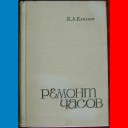
- Б. Л. Елисеев - Ремонт часов. Легкая индустрия, Москва, 1968г.
Eliseev - Remont Chasov / Watch Repair (1968)
This watch repair handbook reflects the protests of 1968. In the preface, the author claims a break with the past watchmaking tradition by means of new organization of the information provided and new methodologies explained. Includes a fancy layout of titles and the unusual illustration of no less than a Patek Philippe 2438 moonphase (!) on p.286 <summary>
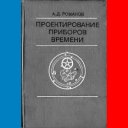
- А. Д. Романов. Проектирование приборов времени. Высшая школа, Москва, 1975г.
Romanov - Proektirovanie Priborov Vremeni / Design of Timing Devices (1975)
Amazing university-level textbook, with theory and applications, and many diagrams and illustrations.
Summary:
Section One.Design and calculation of standard parts and assemblies of the timing devices (Конструирование и расчеты типовых деталей и узлов приборов времени);
1.Connection of the parts (Соединения деталей);
2.Typical components of the timing devices (Типовые детали приборов времени);
3.Typical units of the timing devices (Типовые узлы приборов времени);
4.Friction escapement pendulum regulators (Маятниковые несвободные спусковые регуляторы);
5.Friction escapement balance regulators (Несвободные балансовые спусковые регуляторы);
6.Detached escapement balance regulators (Свободные балансовые спусковые регуляторы);
Section Two.Construction of typical timing devices (Конструкции типовых приборов времени);
7.Fundaments of design of timing device mechanisms (Основы проектирования механизмов приборов времени);
8.Pendulum clocks (Маятниковые часы);
9.Balance watches (Балансовые часы);
10.Stopwatches and chronographs (Секундомеры и часы с секундомером);
11.Precision timing devices (Прецизионные приборы времени);
12.Timing relays (Реле времени.)
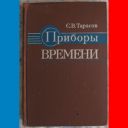
- С. В. Тарасов - Приборы времени. Машиностроение, 1976г.
Tarasov - Pribory Vremeni / Timing Devices (1976)
Another university level textbook by Prof.Tarasov, providing detailed descriptions of the theory behind virtually all types of timing devices available in USSR in 1976. Includes several interesting details on electrical clocks and watches, stopwatches, the rarest 1ЗЧП and 20ЧП astronomical relay clocks and Fedchenko's astronomical pendulum. The new PPCh-7m (ППЧ-7м) timing machine, that had replaced the old PPCh-4, is also described. Approved by the Ministry of Instrumentation, Automation and Control Systems of USSR as a textbook for the students of the schools of industrial watchmaking, published by Mashinostroenie (literally: Mechanical Engineering, it is a branch of USSR Heavy Industry), 376pp, 8700 copies, printed in Leningrad, 1976. <summary>
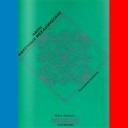
- Руководство по ремонту наручных механических часов. Времекс, 1977г.
Vremex Company - Chasy Naruchnye Mekhanicheskie / Mechanical Wristwatches (after 1976)
A different kind of watch repair handbook from the Vremeks company (Production and sales of watches, clocks and alarm clocks in Uglich, still existing as of 2015.) It is an easy, profusely illustrated, 90pp. practical guide for the occasional watch repairer. No attempt is made at repairing old parts or making new ones. Defective parts, as stated in the preface, can be easily replaced because mass production made spares readily available and in most cases interchangeable.
Summary:
1.Winding and going mechanism (Механизм завода и перевода);
2.Mainspring (Двигатель);
3.Gear train (Колесная система);
4.Escapement (Спусковой механизм);
5.Balance-hairspring (Баланс-спираль);
6.Calendar (Календарь);
7.Automatic winding (Автоподзавод);
8.Alarm (Сигнал);
9.Stopwatch (Секундомер);
10.Requirements for exterior appearance of the watch (Требования к внешнему оформлению часов);
11.Cleaning (Чистка);
12.Lubrication (Смазка.)
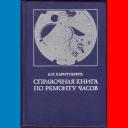
- А. П. Харитончук - Справочная книга по ремонту часов. Легкая индустрия, Москва, 1977г.
Kharitonchuk - Spravochnaya Kniga Po Remontu Chasov / Reference book for watch repair (1977)
A mine of technical information on Poljot, Slava, Vostok, Raketa, Luch, Majak, Jantar, Zarja and more. This reference book is intended for watchmakers in specialized factories, shops and workshops. There is a very interesting chapter on how to manage watch repairs in rural zones and the relevant policy of replacing a customer's faulty watch with a previously repaired one. <summary>
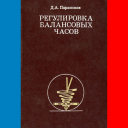
- Д. А. Парамонов - Регулировка балансовых часов. Машиностроение, 1977г.
Paramonov - Regulirovka balansovykh chasov / Adjustment of the watch balance (1977)
Paramonov has been deputy director of the 2MChZ in the early sixties, then director until 1980. This is a highly technical treatise on the lever escapement, its design, the theory behind it, how to industrially adjust and regulate it. Top class.
Summary:
1.Overview of the balance watch (Общие сведения о балансовых часах);
2.Theory and calculation of the balance oscillating system (Теория и расчет балансовых колебательных систем);
3.Functioning of the watch balance and its main dynamic characteristics (Функционирование балансовых часов и их основные динамические характеристики);
4.Types and methods of adjustment of the watch balance (Виды и методы регулировки балансовых часов);
5.Industrial methods of regulation and fluctuation of the isochronism of the balance watch (Промышленные способы регулировки и изохронизации колебаний в балансовых часах);
5.Technical equipment to test, measure and control the dynamic characteristics of the balance watch (Технические средства регулировки, измерения и контроля динамических характеристик балансовых часов.)
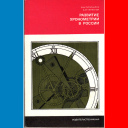
- Д. А. В. Н. Пипуньiров, Б. М. Чернягин - Развитие хронометрии в России. Академиздатцентр «Наука» Москва, 1977г.
Pipunirov, Chernyagin - Razvitie Khronometrii V Rossii / The development of chronometry in Russia (1977)
A historical book on the measure of time and its leading exponents in Russia since 1400, up to the Russian Empire.
Summary: Foreword, p.3, (Предисловие);
1.The beginnings of the history of the mechanical watch in Russia 15th - 17th century, p.7, (Начальный этап истории механических часов в России XV — XVII вв.);
2.The development of watch production in Russia in the 18th century, p.38, (Развитие часового производства в России в XVIII в.);
3.The state of watch of production in Russia in the 19th - early 20th century, p.99, (Состояние часового производства в России в XIX — начале XX в.);
4.The production and use of chronometers and precision timekeepers in Russia in the 19th - early 20th century, p.152, (Производство и применение хронометров и прецизионных часов в России в XIX — начале XX в.);
5.Inventive and design in watchmaking, p.168, (Изобретательство и конструирование в области часового дела);
6.The development of electrical clocks and electrical clock systems in Russia in the 19th - early 20th century, p.186, (Развитие электрочасов и электрочасовых систем в России в XIX — начале XX в.);
7.Conclusions, p.211, (Заключение);
8.Bibliography, p.213, (Литература)
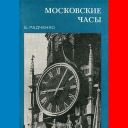
- Б. Радченко - Московские часы. Московский Рабочий, 1980г.
Radchenko - Moskovskie Chasy / Moscow clocks (1980)
A 60pp, tourist book on some beautiful clocks in Moscow.
Summary: Tower clocks (Часы на башнях); First in Russia (Первые на Руси); Kremlin chimes (Кремлевские куранты); The biggest, the highest (Самые большие, самые высокие ); At the Ilinsky gates (У Ильинских ворот); A watch tale (Часы-сказка); Treasures of the Kremlin Armory (Сокровища Оружейной палаты Кремля); "Bacchus" («Бахус»); Contemporaries of the French Revolution (Ровесники французской революции); Masterpieces of Russian jewelry (Шедевры русского ювелира); "The Temple of Glory" («Храм славы»); Wizards of Vyatka forests (Чудодеи из вятских лесов.)
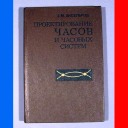
- З. М. Аксельрод - Проектирование часов и часовых систем. Машиностроение, 1981г.
Akselrod - Proektirovanie Chasov i Chasovykh Sistem / Watch and watch systems design (1981)
Very technical textbook, dealing with theory and practice of electromechanical timekeepers, quartz and tuning fork included. The book is intended for engineers and technicians of the instrument-making industry as well as students of universities. Summary:
1.Typical watch diagrams, p.5, (Типовые схемы часов);
2.The oscillating system of the watch, p.40, (Часовые колебательные системы);
3.Electro-mechanical transducers of timing devices, p.98, (Преобразователи электронно-механических приборов времени);
4.Generators of timing devices, p.128, (Генераторы приборов времени);
5.Quartz timing devices, p.164, (Кварцевые приборы времени);
6.Dynamics of timing devices, p.183, (Динамика приборов времени);
7.The influence of external mechanical impacts on the mechanism of the watch, p.242, (Влияние внешних механических воздействий на часовой механизм);
8.Electric watch system, p.274, (Электрочасовые системы.)
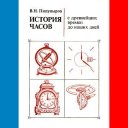
- В. Н. Пипуныров - История часов с древнейших времен до наших дней. Наука, 1982г.
Pipunirov - Istoriya Chasov / History of timekeepers (1982)
Monumental, nearly 500pp., treatise on the history of timekeeping. Pipunirov suggests that his book complements "The development of chronometry in Russia", co-authored with Chernyagin. USSR watchmaking is almost completely ignored, with the exception of few lines on the AChF-3 (АЧФ-3) which is definitely Fedchenko's least interesting astronomical pendulum clock. Summary:
Part I - History of timekeeping in the Ancient World and the Middle Ages, (История часов древнего мира и средних веков);
1.Timekeepers of the Ancient East, p.18, (Часы древнего востока);
2.Antique sun and water clocks, p.34, (Античные солнечные и водяные часы);
3.The clock in the Middle Ages, p.65, (Часы средних веков);
4.The development of the mechanical clock in Western Europe, XIV-XVII centuries, p.141, (Развитие механических часов в западной европе в XIV—XVII вв.);
Part II - The development of the classical oscillatory chronometry (Развитие классической колебательной хронометрии);
1.The development of the pendulum clock, p.194, (Развитие маятниковых часов);
2.The development of the pocket watch, p.253, (Развитие карманных часов);
3.History of the chronometer, p.293, (История хронометра);
4.History of the use of the balance and hairspring, p.334, (История применения баланса и спирали);
5.History of the development of the wristwatch, p.361, (История развития наручных часов);
Part III - History of electro-chronometers, quartz and atomic clocks, (История электрохронометрии, кварцевых и атомных часов);
1.History of pendulum and balance electric clocks, p.381, (История электрических маятниковых и балансовых часов);
2.The development of electro-mechanical and quantum-mechanics timing devices, p.413, (Развитие электронно-механических и квантовомеханических приборов времени.)
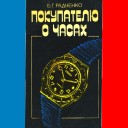
- В. Г. Радченко - Покупателю о Часах. 3-е, Издательство «Экономика», Москва, 1984г.
Radchenko - Pokupatelyu o Chasakh / Watch Buyers (Guide) 3rd.ed (1984)
A nice 80pp. guide to purchasing the right timekeeper, wrist or pocket watch, wall, desk, or grandfather clock. The illustrations include many interesting timepieces like Type-I, Sturmanskie, Poljot diver, to name a few. Definitely worth a look.
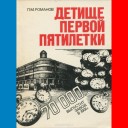
- П. М. Романов - Детище первой пятилетки. Московский рабочий, 1985г.
Romanov, P.M. - Detische pervoy pyatiletki / Brainchild of the first five-year plan (1985)
The birth of the industry of watch and clock making in the USSR. Another version, not text searchable, is also available here. Unfortunately, p.124 and p.125 are missing in both versions.
Summary: Foreword From the Author, p.3, (От авторе );
1.A few words about time and the need to value and protect it, p.5, (Несколько слов о времени и необходимости ценить и беречь его);
2.Watchmaking in pre-revolutionary Russia, p.7, (Часовое дело в дореволюционной России);
3.Need a Soviet watch industry, p.13, (Нужна советская часовая промышленность);
4.The first steps in organizing a new production, p.27, (Первые шаги в организации нового производства);
5.Start of 1st Watch Factory and challenges in development, p.52, (Пуск 1-го часового завода и трудности освоения);
6.The struggle for the plan, p.69, (Борьба за план);
7.First results, p.77, (Первые итоги);
8.Communists and Komsomol members at the forefront, p.85, (Коммунисты и комсомольцы на переднем крае);
9.2nd Watch Factory supplies products, p.95, (2-й часовой завод дает продукцию);
10.Personnel of the watch industry, p.108, (Кадры для часовой промышленности);
11.From simple wall clocks to the electronic clock, p.115, (От ходиков до электронных часов);
12.Archives and bibliographic sources, p.125, (Архивные и литературные источники.)
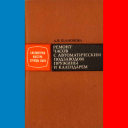
- Л.В. Шамонова - Ремонт часов с автоматическим подзаводом пружины и календарем, Легкая индустрия, Москва, 1985г.
Shamonova - Remont chasov s avtomaticheskim podzavodom pruzhiny i kalendarem / Repair of watches with self-winding mainspring and calendar (1985)
Basic watch repair textbook aimed to shop- and workshop watchmakers and students.
Summary:
1.Additional devices in watches, p.3, (Дополнительные устройства в часах);
2.Design features of watches of different brands, p.23, (Конструктивные особенности часов различных марок);
3.Sequence of inspection and disassembly of the watch to determine faults, p.44, (Последовательность осмотра и разборки часов для определения неисправностей);
4.Faults of the self-winding mechanism, p.48, (Неисправности механизма автоподзавода);
5.Faults of the calendar mechanism, p.55, (Неисправности механизма календаря);
6.Procedure to disassemble and assemble the self-winding mechanism, p.65, (Порядок разборки и сборки механизма автоподзавода);
7.Procedure to disassemble and assemble the calendar mechanism, p.74, (Порядок разборки и сборки механизма календаря);
8.Lubrication of the mechanism, p.84, (Смазка механизма);
9.Stopwatches and watches with chronograph, p.85, (Секундомеры и часы с секундомером);
Bibliography, p.109, (Список литературы.)
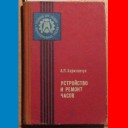
- А. П. Харитончук - Устройство и ремонт часов. Легкая индустрия, Москва, 2-е, 1986г.
Kharitonchuk - Ustroystvo i Remont Chasov / Device description and repair of the timekeeper (1986)
The 2nd edition of a comprehensive watch repair handbook, with many useful summary tables on Russian watch factories and brand logos (p.11,) recommended lubrication (p.336) and a long list of movement designations and characteristics (p.342.) In three parts, Part 1 - The timekeeping device, p.7, (Устройство часов) describes the components and the principle of operation of the watch. Part 2 - Watch repair, p.61, (Ремонт часов) deals with the various kinds of wristwatches and clocks, as well as the necessary equipment and tools to overhaul them, like the ubiquitous watch timing machine PPCh-7m (ППЧ-7м) and the newer P-121 (П-121) along with some interesting less usual instruments. Kinematic schemas are provided for the most common movements: «Слава» 2428, «Ракета» 2628 and 2627, «Восток» 2415, «Луч» 1816, «Восток» 2416, «Полет» 2627 and 2627Н, and also the «Полет» 2612 alarm watch and the 3017 and 3133 chronographs. Stopwatches, timers, clock and alarm clock movements are included as well. The concluding Part 3 - Device description and repair of the electromechanical watch, p.238, (Устройство и ремонт электронно-механических часов) is a one hundred page chapter on digital watches, including detailed servicing instructions for quartz movements КНЧ 3050, 3056, 3056A, 2456, 2356, 1956, Elektronika (Электроника 30350), Luch (Луч 3045 and 3055) and others.
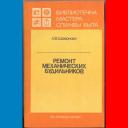
- Л. В. Шамонова - Ремонт механических будильников. Легкая индустрия, Москва, 1987г.
Shamonova - Remont mekhanicheskikh budilnikov / Alarm Clock Repair (1987)
Basic, short handbook on alarm clock repair, including smaller and larger movement types. The lubrication table given is the same as that found in Kharitonchuk, 1986. A reduced size version is also available here.
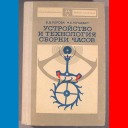
- В. Д. Попова, Н. Б. Гольдберг - Устройство и технология сборки часов. Высшая школа, Москва, 5-е, 1989г.
Popova, Goldberg - Ustroystvo i Tehnologiya Sborki Chasov / Design and technology of watch construction (1989)
Fifth, and last, edition of one of the most widespread watchmaking handbooks ever, Britten's comes to mind, with some 250,000 copies printed since the 1st edition in 1970 (see http://forums.watchuseek.com/f10/some-l ... 03210.html) The Popova-Goldberg is a very good technical reference book for wristwatches, the chapter about clocks is slightly more than a mere list of names, with many summary tables on watch classification, lubrication, troubleshooting, and so on. With respect to previous editions, some descriptions of older mechanical movements have been dropped in favour of newer electric and electronic timekeepers, which now occupy nearly half the book. Kinematic diagrams and electronic schematics are provided of almost all Soviet electromechanical wristwatches including 3045, 3050, 3055, 3056 and others. Also, some very interesting industrial tools are illustrated in the last three chapters, like the automatic winder on p.391. Summary of the 5th edition:
1.General information on watches, p.14 (I. Общие сведения о часах);
2.Structure of the wristwatch, p.40 (II. Устройство наручных часов);
3.Structure of the pocket watch and the stopwatch, p.112 (III. Устройство карманных часов и секундомеров);
4.Structure of large clocks, p.119 (IV. Устройство крупногабаритных часов);
5.Motor, p.137 (V. Двигатель);
6.Going train, p.150 (VI. Основная колесная система);
7.Lever escapement, p.163 (VII. Анкерный ход);
8.Timekeeping regulators, p.180 (VIII. Регулятор);
9.Adjustment of the watch mechanism, p.206 (IX. Регулировка часового механизма);
10.Power supply and magnetic-latch escapement mechanism, p.220 (X. Источники питания и спусковой механизм с магнитной фиксацией);
11.Electronic unit, p.233 (XI. Электронный блок)
12.Typical assembly workflow of the mechanical wristwatch, p.266 (XII. Типовой технологический процесс сборки наручных механических часов);
13.Typical assembly workflow of the electro-mechanical wristwatch with stepper motor, p.359 (XIII. Типовой технологический процесс сборки наручных электронно-механических часов с шаговым двигателем);
14.Test and inspection of watches and mechanisms, p.380 (XIV. Контроль и испытания часов и механизмов);
List of recommended bibliography, p.411 (Список рекомендуемой литературы) - В. Д. Попова, Н. Б. Гольдберг - Устройство и технология сборки часов. Высшая школа, Москва, 3-е, 1976г.
Popova, Goldberg - Ustroystvo i Tehnologiya Sborki Chasov / Design and technology of watch construction (1976)
As mentioned before, there have been 5 editions of the Popova-Goldberg handbook (1st ed.1970, 416pp.; 2nd ed.1973, 446pp.; 3rd ed.1976, 480pp.; 4th ed.1982, 368pp. and 5th ed.1989, 415 pp.) spanning over almost two decades.
If the 5th edition is historically important for being the latest, the most interesting one horologically speaking is probably the 3rd. This older edition (1976) was issued before the quartz revolution, so it is almost entirely devoted to mechanical watches, with the only exception of few descriptions of electronic and electro-magnetic clocks. Still, it has 480 pages, more than any other edition. In fact, many details on watch production, processes, state standards, organisation of watch factories and even safety rules to follow in assembly shops have been included here that are not present in the subsequent editions (see chapters 10, 11, 12, 13, 15, 17 and 18). Those details are precious to understand the status of the Soviet watchmaking industry at the beginning of the Seventies, and a comparison with Tarasov's Technology of Watch Production reveals its evolution (or lack thereof) over the years. Summary of the 3rd edition:
1.General information on watches, p.17 (I. Общие сведения о часах);
2.Structure of the wristwatch, p.39 (II. Устройство наручных часов);
3.Structure of the pocket watch and the stopwatch, p.101 (III. Устройство карманных часов и секундомеров);
4.Structure of large clocks, p.110 (IV. Устройство крупногабаритных часов);
5.Motor, p.128 (V. Двигатель);
6.Going train, p.145 (VI. Основная колесная система);
7.Lever escapement, p.160 (VII. Анкерный ход или спуск);
8.Timekeeping regulators, p.178 (VIII. Регулятор);
9.Adjustment of the watch mechanism, p.206 (IX. Регулировка часового механизма);
10.Basics of Interchangeability, p.229 (Х. Основы взаимозаменяемости);
11.Basic concepts of reliability, p.242 (ХI. Основные понятия надежности);
12.Materials used in the watch industry, p.250 (XII. Материалы, применяемые в часовом производстве);
13.Processing technology for watch parts, p.265 (XIII. Технология обработки часовых деталей);
14.Typical assembly workflow of the wristwatch, p.276 (XIV. Типовой технологический процесс сборки наручных часов);
15.State standards and specifications for watches,p.423 (XV. ГОСТы и технические условия на часы);
16.Test and inspection of watches, p.429 (XVl. Контроль и испытание часов);
17.Mechanization and automation of watch assembly, p.452 (XVII. Механизация и автоматизация сборки часов);
18.Structure of watch factories and safety in assembly shops, p.469 (XVIII. Структура часовых заводов и техника безопасности в сборочных цехах);
Bibliography, p.476 (Литература)
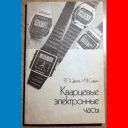
- В. П. Царев, И. В. Сидин - Кварцевые электронные часы. Высшая школа, 1990г.
Tsarev, Sidin - Kvartsevye Elektronnie Chasy / Quartz electronic watches (1990)
Intermediate level textbook on analog and digital display quartz watches, and some nixie clocks, with interesting details on the new quartz watch classification, a bit of theory on the piezoeletric effect of quartz and many useful and well ordered information. The book contains electrical schematics, wiring diagrams, operating instructions and constructive details of virtually every Soviet quartz watch made by Elektronika (Электроника) and more. Summary:
1.Overview of the electronic watch, p.5, (Общие сведения об электронных часах);
2.Introduction on materials science ,p.18, (Краткие сведения из материаловедения);
3.Details and components of the electronic watch, p.42, (Детали и узлы электронных часов);
4.Operation of digital electronic watches, p.100, (Управление цифровыми электронными часами);
5.Watch design and repair, p.151, (Устройство и ремонт часов);
Appendices, p.227, (Приложенил); Bibliography, p.237, (Литература.)
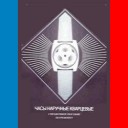
- Часы наручные кварцевые, справочноепособие по ремонту (часть вторая). Заря, 1990г.
Zarja - Chasy naruchnyye kvartsevyye / Quartz wristwatches (1990)
Part two of a very simple handbook on Zarja quartz watches, with little text and lots of illustrations (perhaps part one is about mechanical watches?) In particular, there are troubleshoot and repair sections on the following movements: КНЧ 1356, 1656, 1656A, 1656N (no date) and 2350, 2360, 2450, 2460 (with calendar). Note that the prefix КНЧ (KNCh) comes from «Кварцевые Наручные Часы», i.e. quartz wristwatch.
[ Back to Part I ]